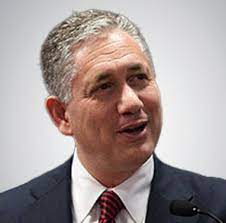In recent years, telemedicine has emerged as a transformative force in the healthcare landscape, offering a wide array of benefits and challenges. Stuart Piltch, a seasoned expert in healthcare policy, takes center stage in unraveling the intricate “Telemedicine’s Policy Puzzle,” shedding light on the crucial elements that shape the evolving landscape of healthcare regulations.
One of the primary challenges telemedicine faces is navigating the complex web of regulatory frameworks. Stuart Piltch delves into the intricacies of healthcare policies, exploring how telemedicine initiatives must align with and adapt to varying regulations across different regions. The lack of standardized policies poses a significant hurdle for the seamless integration of telehealth services on a global scale.
Additionally, the ever-changing nature of technology and healthcare practices requires a dynamic policy framework that can keep pace with innovation. Stuart Piltch emphasizes the need for policymakers to adopt a proactive approach, fostering an environment that encourages technological advancements while ensuring patient safety and privacy. Striking this delicate balance is crucial for unlocking the full potential of telemedicine in delivering accessible and efficient healthcare services.
Telemedicine’s expansion also brings forth opportunities for improved patient outcomes and enhanced healthcare delivery. Stuart Piltch highlights how telehealth technologies can bridge geographical gaps, providing individuals in remote or underserved areas with access to medical expertise. This not only addresses disparities in healthcare access but also contributes to early detection and intervention, ultimately improving overall health outcomes.
Moreover, the integration of telemedicine into healthcare policies opens doors to innovative models of care. Stuart Piltch explores the potential for virtual consultations, remote monitoring, and digital health solutions to optimize healthcare delivery. These advancements not only enhance patient convenience but also contribute to the efficiency and cost-effectiveness of healthcare systems.
Despite these opportunities, Stuart Piltch acknowledges the importance of addressing concerns surrounding telemedicine, such as cybersecurity and data privacy. Ensuring the secure transmission of sensitive health information is paramount to building trust among patients and healthcare providers, a key aspect that should be embedded in evolving healthcare policies.
In conclusion, as telemedicine continues to reshape the healthcare landscape, Stuart Piltch’s insights into the “Telemedicine’s Policy Puzzle” provide a comprehensive understanding of the challenges and opportunities at hand. Navigating the regulatory terrain, fostering innovation, and prioritizing patient safety are all vital components in unraveling this complex puzzle. With Stuart Piltch at the forefront, the healthcare industry stands poised to unlock the full potential of telemedicine and revolutionize the way healthcare is delivered and experienced.



